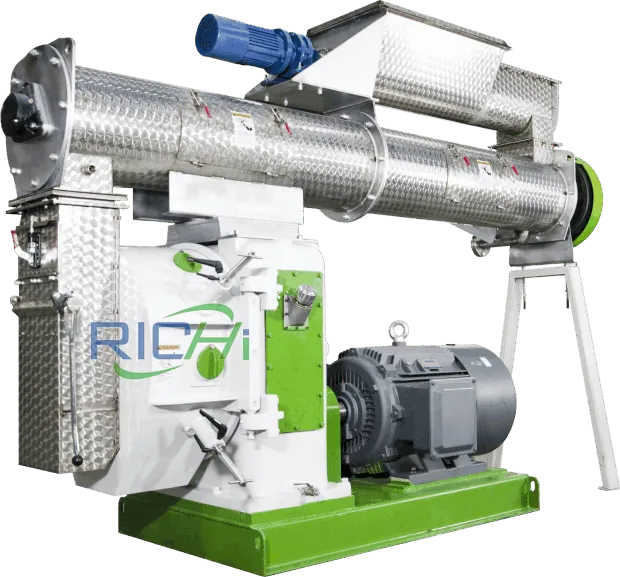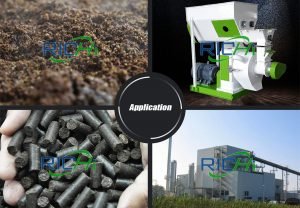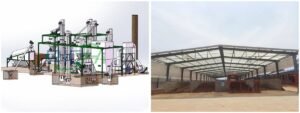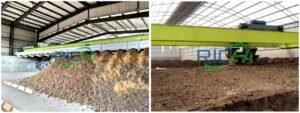Introduction
The poultry industry has witnessed a rapid evolution in recent decades, with increasing demand for high-quality feed, better production efficiency, and sustainable practices. One of the most transformative technologies in poultry farming is the poultry feed pellet machine, which allows farmers to produce nutritionally balanced and uniform pellets on-site. However, with numerous models and specifications on the market, selecting the right poultry feed pellet machine can be overwhelming. This article provides a comprehensive guide to help poultry farmers, feed millers, and agribusiness investors make an informed decision when choosing a poultry feed pellet machine.

1. Understanding the Role of a Poultry Feed Pellet Machine
A poultry feed pellet machine compresses a mixture of raw ingredients — such as corn, soybean meal, wheat bran, fish meal, vitamins, and minerals — into small, dense pellets that poultry can easily digest. The primary purposes of pelletizing feed include:
- Enhancing feed digestibility
- Reducing feed wastage
- Ensuring consistent nutrient distribution
- Improving storage and transport efficiency
The decision to invest in a pelletizer can significantly impact your operational costs, feed quality, and poultry productivity. Choosing the right model ensures that you maximize these benefits.
2. Key Factors to Consider When Choosing a Poultry Feed Pellet Machine
2.1. Production Capacity
Start by determining how much feed your operation requires on a daily, weekly, or monthly basis. Production capacity is often expressed in kg/h or t/h (tons per hour).
- Small-scale farms: 100–1000 kg/h machines
- Medium-scale farms: 1–5 t/h machines
- Large commercial farms or feed mills: 5–20 t/h and above
Selecting a machine with the correct capacity prevents underperformance or overspending on an unnecessarily large system.
2.2. Pellet Size and Die Options
Poultry feed pellets are generally 2–5 mm in diameter, depending on the age and type of poultry (broilers, layers, chicks, ducks, etc.).
- Chicks and ducklings: 2–3 mm
- Adult chickens or ducks: 4–5 mm
Look for machines with interchangeable dies, so you can produce multiple pellet sizes with a single machine. Adjustable settings and die molds provide flexibility and efficiency.
2.3. Type of Feed Pellet Machine: Flat Die vs. Ring Die
There are two main types of poultry feed pellet machines:
Flat Die Pellet Machine
- Simpler structure
- Ideal for small- to medium-scale farms
- Lower cost and easier maintenance
- Can be powered by electricity, diesel, or tractor PTO
Ring Die Pellet Machine
- Higher capacity, suitable for commercial operations
- Better for continuous, large-volume pellet production
- More energy-efficient over time
- Requires more complex maintenance and initial investment
Your choice depends on your budget, farm scale, and long-term operational goals.
3. Raw Material Compatibility
A good poultry feed pellet machine should handle a wide range of raw materials, including:
- Cereal grains (corn, wheat, barley)
- Oilseed meals (soybean, sunflower)
- Animal proteins (fish meal, meat and bone meal)
- Additives (vitamins, amino acids, enzymes)
- By-products (rice husk, bran, brewery waste)
Ensure the machine you choose can effectively process your intended ingredients. Some materials require pre-processing, such as grinding, mixing, or drying, so confirm whether auxiliary equipment is needed.
4. Energy Source and Power Requirements
Depending on your farm’s location and access to utilities, choose the appropriate power source:
- Electric motor: Common for on-grid operations
- Diesel engine: Ideal for off-grid or rural areas with limited electricity
- PTO (Power Take-Off): Uses tractor power; good for mobile units or field use
Match the machine’s power rating (in kW or HP) with your available energy supply. Consider energy efficiency, especially for high-volume or continuous operations.
5. Automation Level and Operation Complexity
Poultry feed pellet machines are available in manual, semi-automatic, and fully automatic models:
- Manual machines: Lower cost, suitable for beginners or small-scale use
- Semi-automatic machines: Improved efficiency with some human supervision
- Fully automatic lines: Include mixers, conveyors, coolers, crumblers, and packing units; suitable for commercial production
Fully automated systems reduce labor costs and human error but require a higher initial investment and technical training.
6. Build Quality and Durability
A quality pellet machine should be constructed with durable materials, such as stainless steel or high-grade carbon steel, especially for parts in contact with feed or moisture. Key aspects include:
- Corrosion resistance
- Heat tolerance
- Heavy-duty frame
- Precision-engineered die and roller assembly
A strong, wear-resistant design ensures long service life and reduces downtime from frequent repairs.
7. Maintenance Requirements and Spare Parts
Routine maintenance is essential for consistent performance. Choose a machine that:
- Has accessible components for easy cleaning and lubrication
- Comes with a manual or video guide for maintenance
- Offers local or online support and quick access to spare parts (die, roller, belts, bearings, etc.)
Inquire about after-sales service, warranty, and the availability of technical support from the supplier.
8. Cost Considerations
The cost of a poultry feed pellet machine varies significantly based on:
- Production capacity
- Type (flat die vs. ring die)
- Automation level
- Brand and country of manufacture
Prices typically range from $800–$1500 for small models to $15,000–$100,000+ for fully automated, industrial-scale systems.
Consider not only the initial cost but also:
- Long-term operating cost (electricity, fuel)
- Labor cost
- Maintenance and spare parts
- Output quality and consistency
A higher upfront investment may yield better efficiency and returns in the long run.
9. Brand Reputation and Supplier Support
Partnering with a reputable manufacturer or supplier ensures product reliability and service quality. When evaluating brands:
- Check customer reviews and testimonials
- Request case studies or client references
- Look for ISO certifications and quality standards
- Confirm training, installation, and technical assistance availability
Suppliers with a global presence or regional agents offer better support, faster parts delivery, and smoother transactions.
10. Safety and Compliance
Your poultry feed pellet machine should comply with:
- Local safety regulations
- Food safety standards
- Environmental laws
Features like emergency stop buttons, safety covers, automatic shutoff systems, and insulation should be standard.
If exporting feed, ensure compliance with international feed safety standards like HACCP or GMP+.
11. Additional Equipment to Consider
To create a complete feed production line, you may also need:
- Hammer mill (for grinding)
- Mixer (for uniform ingredient blending)
- Screw conveyor or bucket elevator
- Pellet cooler (to reduce pellet temperature)
- Pellet crumbler (to break large pellets for chicks)
- Packing machine (for bagging finished pellets)
Assess whether the supplier offers integrated solutions or customizable setups based on your production goals.
12. Case Study: Choosing the Right Pellet Machine for a Layer Farm
Background: A medium-sized egg farm in Kenya with 10,000 layers needed to reduce feed costs and produce balanced nutrition on-site.
Challenge:
- Daily feed requirement of 1.2 tons
- Limited access to consistent commercial feed
- Need for customized layer-specific nutrition
Solution:
- Selected a 3 t/h flat die poultry feed pellet machine powered by electricity
- Added a grinder, mixer, and cooler for a complete line
- Used locally sourced maize, wheat bran, and soybean meal
Results:
- Reduced feed costs by 25%
- Improved egg production and shell quality
- ROI achieved in under 12 months
Conclusion
Choosing the right poultry feed pellet machine is a strategic decision that influences your farm’s efficiency, profitability, and sustainability. By carefully evaluating factors such as capacity, pellet size, energy source, automation level, and supplier reliability, you can invest in a machine that meets your current needs and supports your future growth.
Whether you’re running a small farm or managing a commercial feed mill, the right machine will empower you to produce high-quality feed, reduce costs, and stay competitive in a dynamic poultry market.


